Premium Only Content
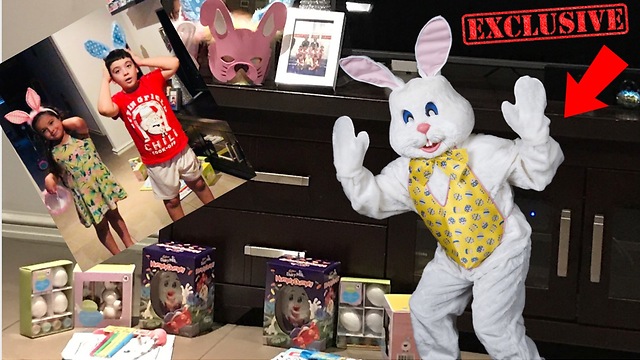
EASTER BUNNY CAUGHT! EASTER EGG HUNT with Michael and Sienna 2018
EASTER BUNNY CAUGHT! EASTER EGG HUNT with Michael and Sienna 2018. Happy Easter Everyone!! The Easter Bunny has been and left Easter Eggs around for Michael and Sienna to find! But he was caught by Mummy who took a photo of him!! Join Michael and Sienna on their Easter Egg Hunt and haul and see the photo of the Easter Bunny in action!! We hope you and your families have a lovely Easter and enjoy the day!
Please remember to like, subscribe and share if you like our video and content!!
'The Easter Bunny (also called the Easter Rabbit or Easter Hare) is a folkloric figure and symbol of Easter, depicted as a rabbit bringing Easter eggs. Originating among German Lutherans, the "Easter Hare" originally played the role of a judge, evaluating whether children were good or disobedient in behavior at the start of the season of Eastertide.[1] The Easter Bunny is sometimes depicted with clothes. In legend, the creature carries colored eggs in his basket, candy, and sometimes also toys to the homes of children, and as such shows similarities to Santa Claus or the Christkind, as they both bring gifts to children on the night before their respective holidays. The custom was first[2][unreliable source?] mentioned in Georg Franck von Franckenau's De ovis paschalibus[3] ('About Easter Eggs') in 1682, referring to a German tradition of an Easter Hare bringing Easter eggs for the children.The hare was a popular motif in medieval church art. In ancient times, it was widely believed (as by Pliny, Plutarch, Philostratus, and Aelian) that the hare was a hermaphrodite.[4][5][6] The idea that a hare could reproduce without loss of virginity led to an association with the Virgin Mary, with hares sometimes occurring in illuminated manuscripts and Northern European paintings of the Virgin and Christ Child. It may also have been associated with the Holy Trinity, as in the three hares motif.[4][7] Eggs, like rabbits and hares, are fertility symbols[8] of antiquity. Since birds lay eggs and rabbits and hares give birth to large litters in the early spring, these became symbols of the rising fertility of the earth at the Vernal Equinox.
Rabbits and hares are both prolific breeders. Female hares can conceive a second litter of offspring while still pregnant with the first.[9][10] This phenomenon is known as superfetation. Lagomorphs mature sexually at an early age and can give birth to several litters a year (hence the saying, "to breed like rabbits" or "to breed like bunnies"). It is therefore not surprising that rabbits and hares should become fertility symbols, or that their springtime mating antics should enter into Easter folklore.n addition, Orthodox churches have a custom of abstaining from eggs during the fast of Lent. The only way to keep them from being wasted was to boil or roast them, and begin eating them to break the fast.[citation needed] As a special dish, they would probably have been decorated as part of the celebrations. Later, German Protestants retained the custom of eating colored eggs for Easter, though they did not continue the tradition of fasting.[11] Eggs boiled with some flowers change their color, bringing the spring into the homes, and some over time added the custom of decorating the eggs.[12] Many Christians of the Eastern Orthodox Church to this day typically dye their Easter eggs red,[13] the color of blood, in recognition of the blood of the sacrificed Christ (and, of the renewal of life in springtime). Some also use the color green, in honor of the new foliage emerging after the long-dead time of winter. The Ukrainian art of decorating eggs for Easter, known as pysanky, dates to ancient, pre-Christian times. Similar variants of this form of artwork are seen amongst other eastern and central European cultures.[14]
The idea of an egg-giving hare went to the U.S. in the 18th century. Protestant German immigrants in the Pennsylvania Dutch area told their children about the "Osterhase" (sometimes spelled "Oschter Haws"[15]). Hase means "hare", not rabbit, and in Northwest European folklore the "Easter Bunny" indeed is a hare. According to the legend, only good children received gifts of colored eggs in the nests that they made in their caps and bonnets before Easter.[16]' Source: https://en.wikipedia.org/wiki/Easter_Bunny
-
 0:28
0:28
MichaelandSienna
5 years agoYou’re Ruining My Day Mom! Cute Toddler in Funny Conversation with Mom
48.2K -
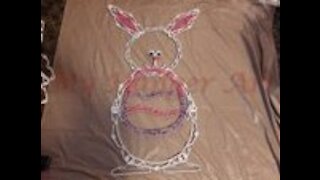 7:12
7:12
My Hanger Art
4 years ago $0.07 earnedHanger Easter Bunny
291 -
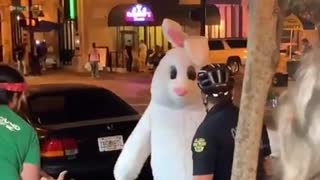 1:00
1:00
ViralHog
5 years ago $0.05 earnedEaster Bunny Brawl
1181 -
 4:00
4:00
KiwiLimon_DessertsRecipes_English
4 years agoBunny Cake for Easter
312 -
 1:00
1:00
Buzzvideos - EN
4 years agoEaster Bunny brings pregnancy announcement
85 -
 0:07
0:07
MoosetheGoldenBoy
4 years agoImposter Easter Bunny!
139 -
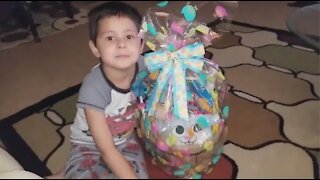 9:23
9:23
2CuteTinkerKid
4 years agoEaster Egg Hunt Surprise Challenge
244 -
 0:55
0:55
WPTV
4 years agoEaster egg hunt held with social distancing
19 -
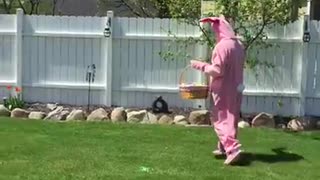 0:32
0:32
ViralHog
4 years agoDisgruntled Easter Bunny
59 -
 6:00
6:00
My Hanger Art
4 years ago $0.02 earnedHanger Easter Egg
819